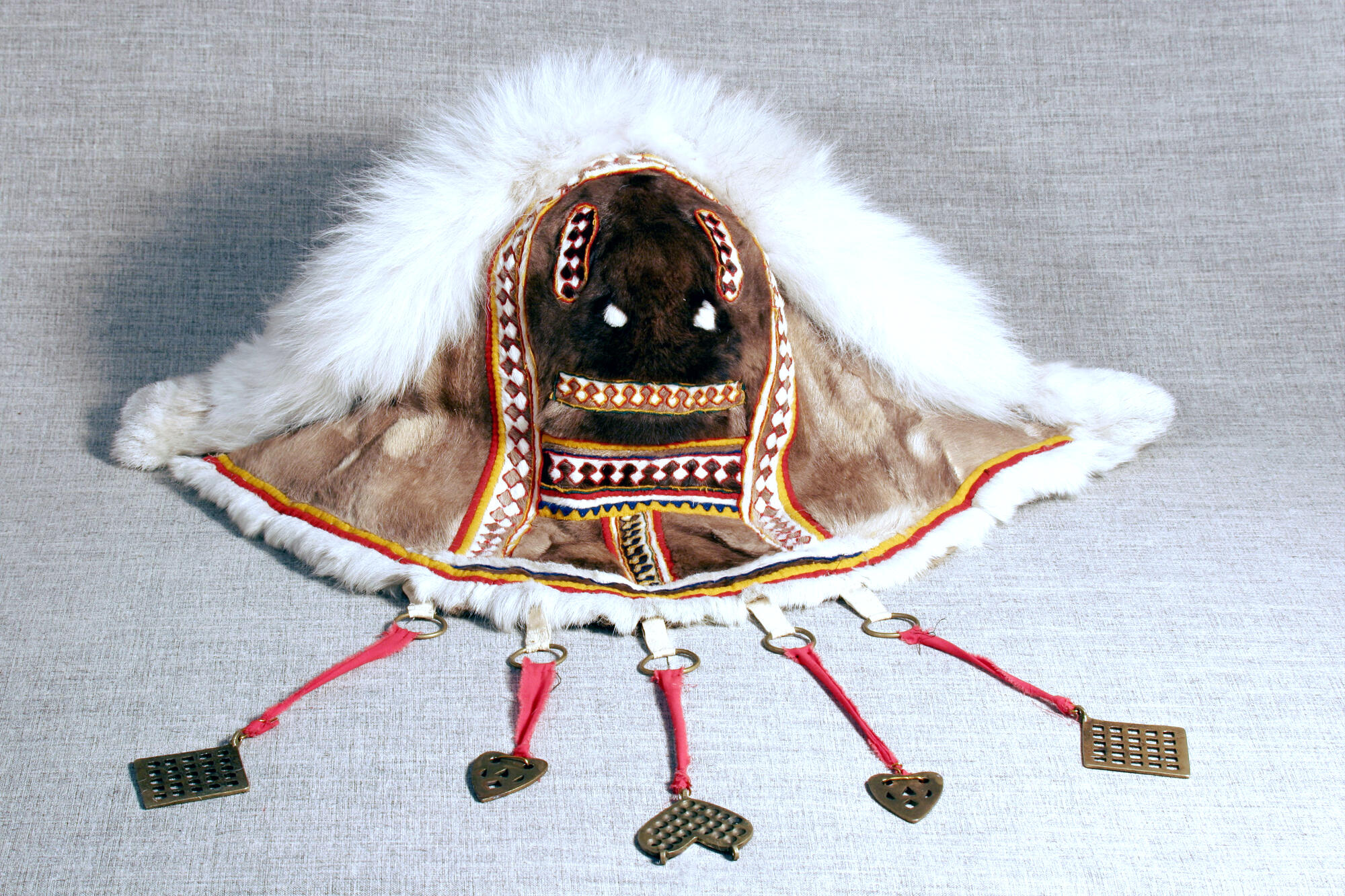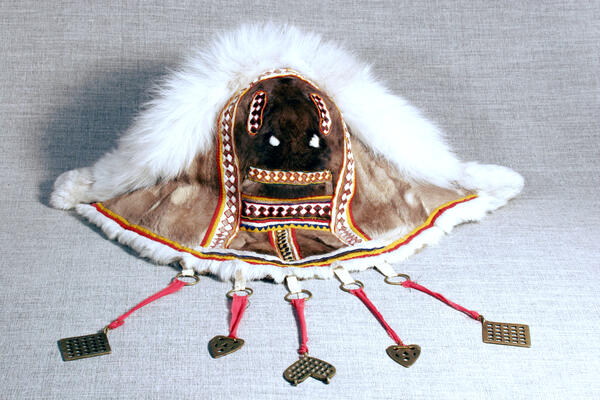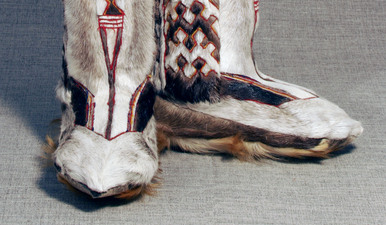The Forest Nenets on their own provide themselves with warm clothing that allows surviving in the severe climate of the North. Women alone sew it, and they make both male and female winter coats, called ‘malitsas’ and yagushkas’, and special snow-proof fur shoes “kisy”. All traditional clothing is made of processed reindeer skins and decorated with national ornaments. This work is complicated and lasting, for instance, it may take more than a year to make a yagushka.
A kApor (a fur bonnet) is a traditional winter headwear and one of the most outstanding pieces of a Forest NEnets woman’s wardrobe. Outer and inner fur layers make it very warm.
It consists of three parts: a long strip which goes through the top of the head to the ears, a back part and a piece to cover the shoulders in a semicircle manner. The top is made of fur from a young reindeer forehead, eye sockets placed so that they look backwards and protect from evil. They are contrasted by fur of other color. The place were antlers used to be is covered by small pieces of cloth. Strips of dark and light fur ornament connect the details, colored cloth with ribbons of different colors edges seams. Fur of a 3-4-month-old reindeer goes for a lining.
The NEnets women sew around the facial part of a kApor thick fur edging, it consists of 2 or 3 Arctic fox tails or long-haired reindeer fur. These materials are used not only for their pleasant looks but also because they are durable and solid. Besides, fur preserves specific climate around the face that saves it from frostbite. It is especially important when it’s –50°C outside.
At the bottom part of a kApor they attach copper decorations with cut-through or relief patterns with laces made of rovduga, deer suede. Heavy copper moulds are passed on to female descendants in the Forest NEnets families and they are considered to be a powerful charm protecting from evil spirits and hostile forces. Besides their decorative function they also serve for a practical reason: they weigh down the bottom parts of a kApor pushing the headwear tight to a yagUshka, a winter coat, and protecting from wind.
Tatyana Pyak, a Rychi-Yakha camp resident, made a fur kapor displayed in the exposition of the museum.
A kApor (a fur bonnet) is a traditional winter headwear and one of the most outstanding pieces of a Forest NEnets woman’s wardrobe. Outer and inner fur layers make it very warm.
It consists of three parts: a long strip which goes through the top of the head to the ears, a back part and a piece to cover the shoulders in a semicircle manner. The top is made of fur from a young reindeer forehead, eye sockets placed so that they look backwards and protect from evil. They are contrasted by fur of other color. The place were antlers used to be is covered by small pieces of cloth. Strips of dark and light fur ornament connect the details, colored cloth with ribbons of different colors edges seams. Fur of a 3-4-month-old reindeer goes for a lining.
The NEnets women sew around the facial part of a kApor thick fur edging, it consists of 2 or 3 Arctic fox tails or long-haired reindeer fur. These materials are used not only for their pleasant looks but also because they are durable and solid. Besides, fur preserves specific climate around the face that saves it from frostbite. It is especially important when it’s –50°C outside.
At the bottom part of a kApor they attach copper decorations with cut-through or relief patterns with laces made of rovduga, deer suede. Heavy copper moulds are passed on to female descendants in the Forest NEnets families and they are considered to be a powerful charm protecting from evil spirits and hostile forces. Besides their decorative function they also serve for a practical reason: they weigh down the bottom parts of a kApor pushing the headwear tight to a yagUshka, a winter coat, and protecting from wind.
Tatyana Pyak, a Rychi-Yakha camp resident, made a fur kapor displayed in the exposition of the museum.



